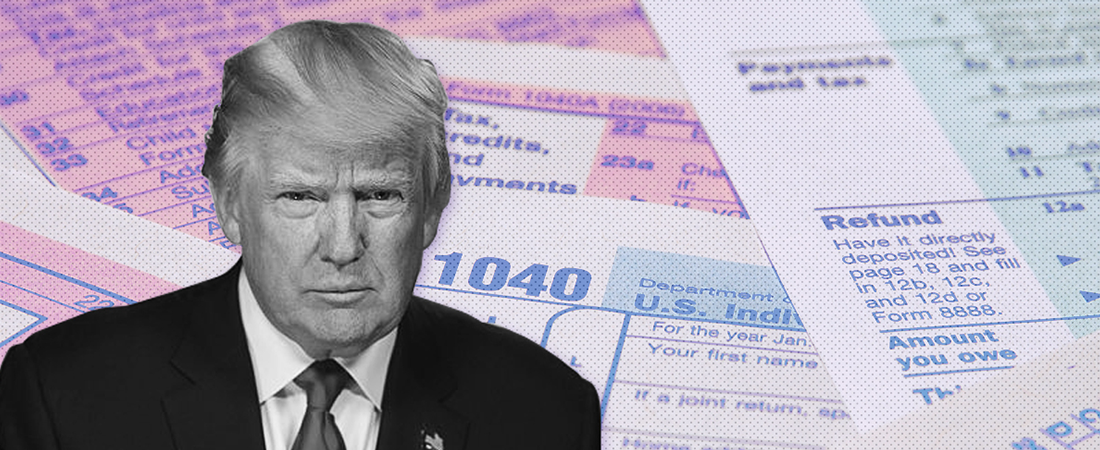May 15, 2017
President Trump’s Tax Plan Explained: What Exactly Is It?
What will the President’s plans for tax structure mean for you? We break it down.

We’re all waiting to see what the Trump tax plan will be.
In addition to creating a new health care plan for America, President Trump has another item on his agenda: Overhauling taxes.
Tax reform is still on the docket as a high-priority issue. If and when the new tax code finds its way to Congress, you should be prepared with enough information to navigate your 1040 confident that you are sending your tax dollars into a system you understand.
We’ve broken down the major changes to tax structure that he’s outlined in his reform proposal and what those changes might mean for you.
Code too complicated
The Trump tax plan rests on the premise that the current tax code is too complex. His proposed solution is to reduce the number of tax brackets to three from the current seven, remove several payment and deduction options such as the Alternative Minimum Tax. He also wants to close a number of loopholes that many wealthy Americans have capitalized on to pay a lower amount than dictated by their income.
While those individual aspects may seem straightforward enough, there is a lot to unpack regarding whether the average American family will benefit as much as President Trump has signaled.
Old brackets, new brackets
First, let’s focus on the reduction of the income tax categories. The current income tax structure for individuals breaks down like this:
- 10% of income between $0 and $9,325
- $932.50 plus 15% of income between $9,325 and $37,950
- $5,226.25 plus 25% of income between $37,950 and $91,900 $5,226.25 28%
- $18,713.75 plus 28% of income between $91,900 and $191,650
- $46,643.75 plus 33% of income between $191,650 and $416,700
- $120,910.25 plus 35% of income between $416,700 and $418,400 39.60%
- $121,505.25 plus 39.6% of income over $418,400
Those dollar amounts increase to varying degrees for those filing jointly or as a head of household, a pattern that holds for the president’s proposal.
Under President Trump’s proposal, the individual filer brackets would look like this:
- 12% for income between $0 and $37,000
- 25% for income between $37,000 and $112,500
- 33% for income of more than $112,500
Who Gets The Savings?
At first blush these savings seem universal, particularly with Trump’s additional proposal to more than double the standard deduction amounts for both individual and married filers, from $6,200 and $12,600 to $15,000 and $30,000 respectively.
However, while the proposed measures seem staggering, they also come with the elimination of the personal exemption deduction, which allows individuals to deduct $4,050 for themselves, a spouse if they are filing jointly, as well as deductions for children or dependants.
This means that smaller families and individuals will most likely see a net reduction in their taxes while large families or single-parent households will likely experience an increase.
A study by the non-partisan think tank the Tax Policy Center, projects that the savings for most middle- and lower-income households would only amount to slightly over $1,000 or less (between about 0.8 and 2 percent of income) while those earnings more than $3.7 million — about 0.1 percent of Americans — would have an average savings of about $1.1 million, more than 14 percent of their earned income.
Additionally, the elimination of the Alternative Minimum Tax, which is a separate, flat-rate taxation traditionally imposed on wealthy individuals, corporations, or trusts, would also signal more opportunity for wealthy American to benefit from the President’s tax plan.
Deductions and loopholes
President Trump has pledged other measures to both decrease the tax advantages of wealthy Americans, by taxing carried interest on investments as regular income and eliminating other loopholes he has not specifically mentioned, while providing additional credits to families in the form of increased deductions for child care.
However, the Tax Policy Center also found that the taxation of carried interest could be subverted by hedge funds under Trump’s proposed flat 15 percent corporate tax rate, as that interest can still be deducted as business revenue.
On top of that, the deductions available to parents, particularly single parents making less than $100,000 who will no longer be able to file personal exemptions, could still end up paying more in income taxes under this new plan.
Trump tax plan: What Does it All Mean?
All this to say, there are a lot of concerns and open-ended question. And while the President has claimed his plan is budget neutral, in conjunction with other federal budget cuts he plans on making, there are substantial doubts as to whether that could ever be the case.
So what should you do in the event that the Trump tax plan, or some version of it, reaches legislation? Well, that depends on where you stand on tax policy. Regardless, brushing up on the tax code and any more developments on how it might change certainly won’t hurt.
Keep reading: Invest Your Tax Returns Like Harry Potter











